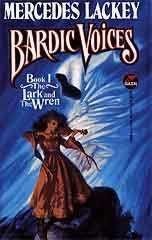Paul Rabbitts - Sir Christopher Wren
Here you can read online Paul Rabbitts - Sir Christopher Wren full text of the book (entire story) in english for free. Download pdf and epub, get meaning, cover and reviews about this ebook. year: 2018, publisher: Bloomsbury Publishing, genre: Non-fiction. Description of the work, (preface) as well as reviews are available. Best literature library LitArk.com created for fans of good reading and offers a wide selection of genres:
Romance novel
Science fiction
Adventure
Detective
Science
History
Home and family
Prose
Art
Politics
Computer
Non-fiction
Religion
Business
Children
Humor
Choose a favorite category and find really read worthwhile books. Enjoy immersion in the world of imagination, feel the emotions of the characters or learn something new for yourself, make an fascinating discovery.
- Book:Sir Christopher Wren
- Author:
- Publisher:Bloomsbury Publishing
- Genre:
- Year:2018
- Rating:5 / 5
- Favourites:Add to favourites
- Your mark:
- 100
- 1
- 2
- 3
- 4
- 5
Sir Christopher Wren: summary, description and annotation
We offer to read an annotation, description, summary or preface (depends on what the author of the book "Sir Christopher Wren" wrote himself). If you haven't found the necessary information about the book — write in the comments, we will try to find it.
Sir Christopher Wren — read online for free the complete book (whole text) full work
Below is the text of the book, divided by pages. System saving the place of the last page read, allows you to conveniently read the book "Sir Christopher Wren" online for free, without having to search again every time where you left off. Put a bookmark, and you can go to the page where you finished reading at any time.
Font size:
Interval:
Bookmark:


I N 1750 A collection of the Wren family papers was published by Sir Christopher Wrens son as a volume called Parentalia . It has proved a valuable source of information on Wrens life, including his career and family background. There have been many biographies since then on one of this countrys greatest ever architects. But here lies the problem. The majority of these biographies have concentrated and focused on Wren the architect the great designer of St Pauls Cathedral and of the many churches destroyed after the Great Fire of London in 1666. It is absolutely no exaggeration to say that even today, few people are fully aware of the fact that Wren was a distinguished professional astronomer until he was in his mid-thirties, and that it was as a scientist and an astronomer that he became a founder-Fellow of the Royal Society. Labelled a miracle of a youth at a very early age, he served under five sovereigns and built some of Englands greatest churches, ranging from the majestic St Pauls Cathedral to the City of London churches, as well as some of our finest secular buildings, including royal palaces, university facilities at Oxford and Cambridge, grand and imposing hospitals at Greenwich and Chelsea and a number of great houses. This books purpose is therefore not a detailed account of his life but an introduction to Sir Christopher Wren, the astronomer, scientist, mathematician, architect and, above all, a versatile and Eng lish gentleman.

The Sheldonian Theatre in Oxford. Copper engraving (1675) by David Loggan ( 16351692 ).
S IR C HRISTOPHER W REN WAS a man of science and invention, and at the age of thirty he became one of the countrys greatest architects. However, the term scientist and architect during the sixteenth and seventeenth centuries meant something completely different from today. Wren was without doubt a scientist. He was a professor of astronomy and had carried out significant research in physics and physiology. The term architect, however, and indeed the field of architecture, was generally not perceived as a distinct profession. Nobody in the seventeenth century was either apprenticed or academically trained in architecture and if they came to the practice of it, it was either as an amateur of the arts or else as an official or technician of some kind who happened to achieve eminence in the designing of buildings. While it is certainly quite right to call Christopher Wren an architect, in no official document of his busiest years was Wren ever described as such. Similarly, his predecessor Inigo Jones first became famous as a designer of costumes and stage settings with his first recorded architectural building design circa 1608 for Lady Cotton. Jones was eventually responsible for some of Londons finest buildings, including the Banqueting House, the Palace of Whitehall and Covent Garden Square. As we shall see later, Jones was also responsible for another large project: undertaking the repair and re-modelling of St Pauls Cathedral; and between the years of 1634 and 1642, he wrestled with the dilapidated Gothicism of Old St Pauls, casing it in classical masonry and totally redesigning the west front. Jones title, however, was Surveyor-General of the Kings Works, which he was app ointed in 1615.

George Shepheard, The Banqueting House, Whitehall, from the River (1810).

Alexander Bannerman, Inigo Jones (1762).
It was not unusual and certainly not extraordinary that so many of Wrens contemporaries and Wren himself were connected with science and art. Many at the time were involved in multiple areas of interest music, anatomy, poetry and more. Wrens generation was part of a historic movement, as architectural historian John Summerson has described, and was the driving force behind a strong tide of change which crossed Europe in the first half of the seventeenth century. For 150 years before Wren, from around 1500, a revolution in human thought had been unfolding, which would eventually evolve into modern science. It was into this era that a young Christopher Wren entered, and he was to play one of the most significant roles within this evolution.
By the year of Christopher Wrens birth in 1632, the movement which Englishmen were now calling the new philosophy or experimental philosophy had established itself in all the great centres of civilization. Wren was the son of a clergyman, the nephew of another and his upbringing was that of a High Church royalist. Wren senior had been rector of a Wiltshire village, East Knoyle, but before Wren junior had reached the age of two, his father succeeded his own elder brother as Dean of Windsor and removed to the deanery his large family of daughters and the young Christopher Wren. At Windsor, the Wrens were within a privileged circle of the court and it was here that Christopher first attracted the attention of men of real influence. One of these was a German prince, Charles Lewis, brother of Prince Rupert and nephew of Charles I. Charles Lewis was an exile, trying to obtain help in regaining the Princedom of the Palatine, in which he was eventually successful. He was a man of great influence and in particular he liked to patronise learning. Yet it was the princes private chaplain, John Wilkins, who was to have the greatest influence on the young Wren. Wilkins is said to have been made his chaplain on account of his proficiency in mathematics. In 1638, Wilkins published his first work anonymously, wherein he attempted to prove that the moon was a habitable world. In a later edition, he added a chapter on the possibility of it being reached by volitation (the power of flight). A second work, showing the probability of the earth being a planet, appeared in 1640. During his stay in London as a chaplain he was an active promoter of the weekly meetings which, as early as 1645, were held by divers worthy persons inquisitive into natural philosophy and other parts of human learning, and particularly of what hath been called the new philosophy or experimental philosophy. These gatherings of philosophers, the Invisible College of Robert Boyle, were the beginnings of what was to become the Royal Society.
Another man of great influence was the Reverend William Holder, who, in 1643, when Wren was eleven, married the latters beloved sister, Susan. It was Holder who introduced Wren to the principles of mathematics. The Wrens and the Holders were thrown together as a result of the Civil War, which began in 1642. As High Church royalists, it was not long before they were significantly affected, with the deans brother Matthew, the Bishop of Ely, committed to the Tower of London in 1641, where he remained for eighteen years. The following year, soldiers pillaged the Windsor deanery, forcing the dean to retreat with the Holders to Bristol, which was held for two years for the king. From Bristol, Wren senior and his daughter and son-in-law retired finally to Bletchingdon, Oxfordshire, where the dean was to remain until his death, t en years later.
Font size:
Interval:
Bookmark:
Similar books «Sir Christopher Wren»
Look at similar books to Sir Christopher Wren. We have selected literature similar in name and meaning in the hope of providing readers with more options to find new, interesting, not yet read works.
Discussion, reviews of the book Sir Christopher Wren and just readers' own opinions. Leave your comments, write what you think about the work, its meaning or the main characters. Specify what exactly you liked and what you didn't like, and why you think so.













